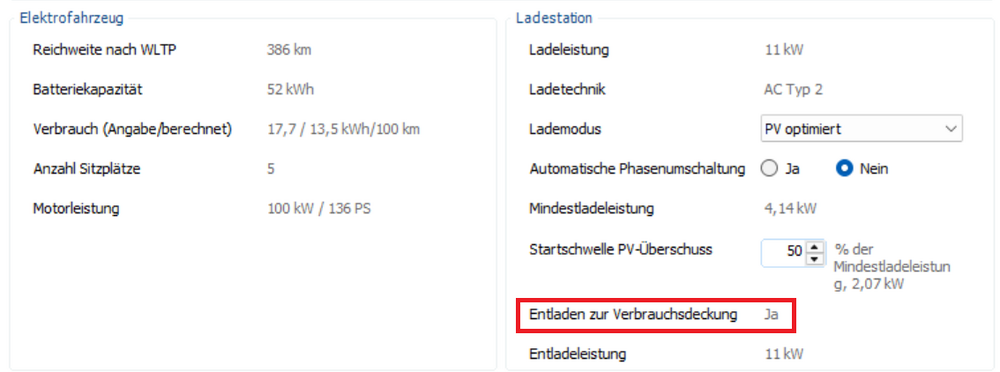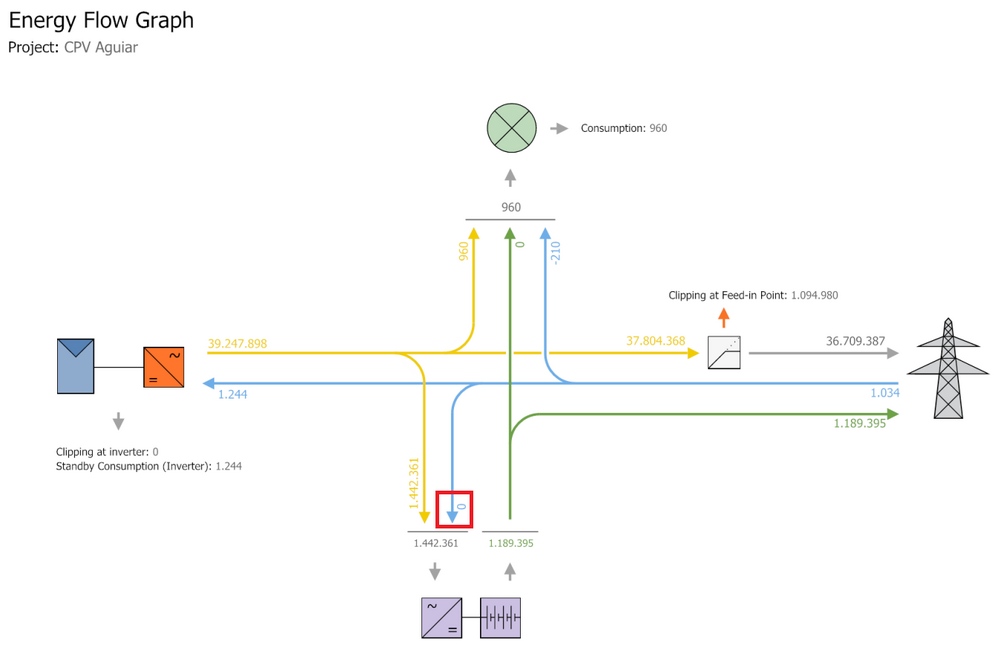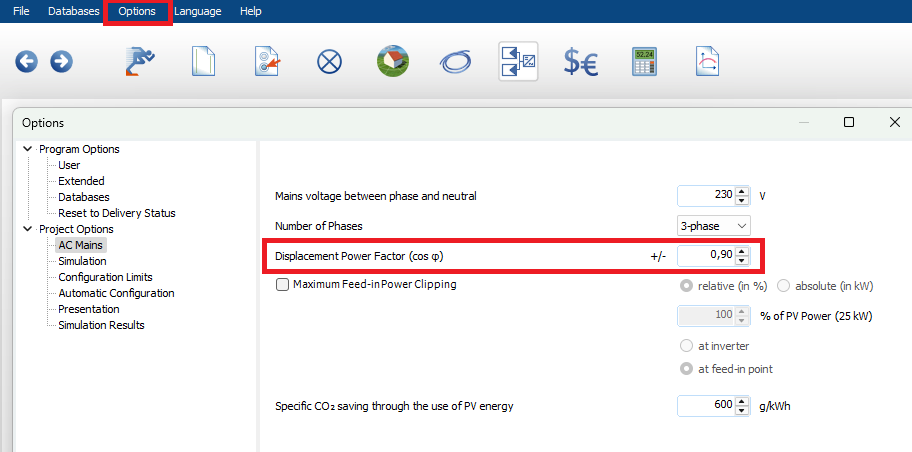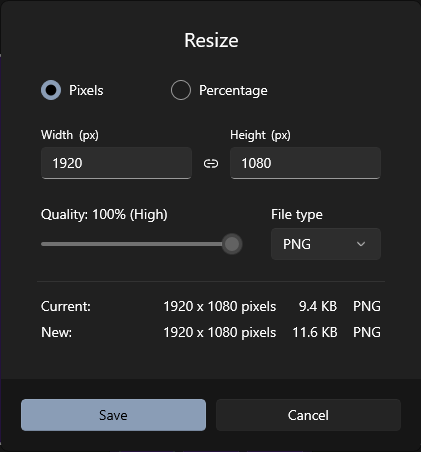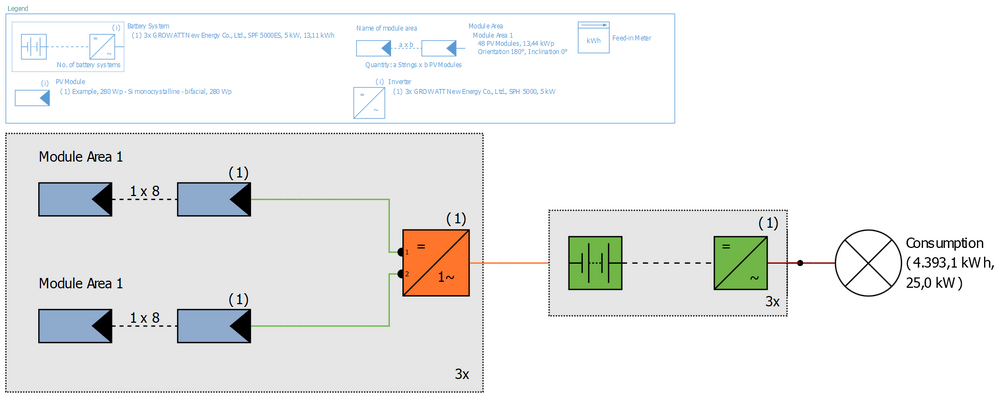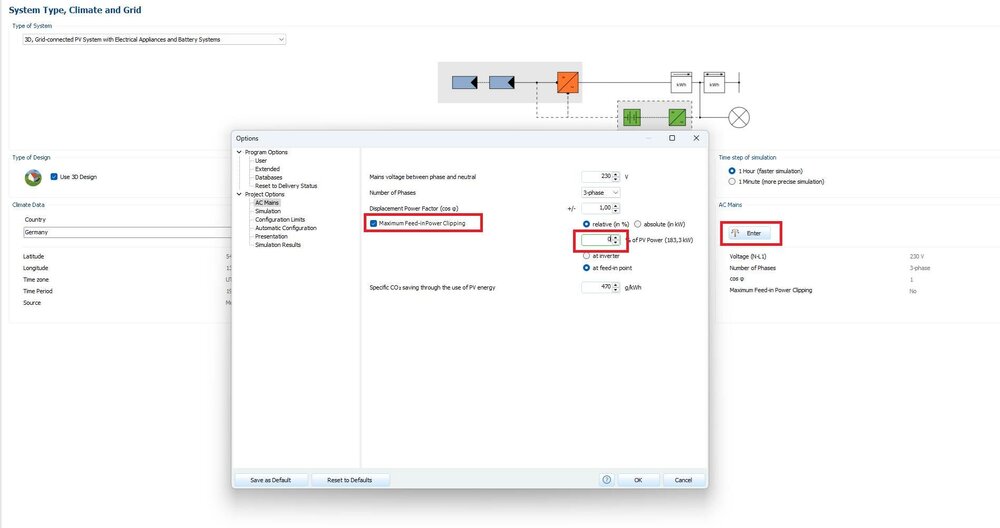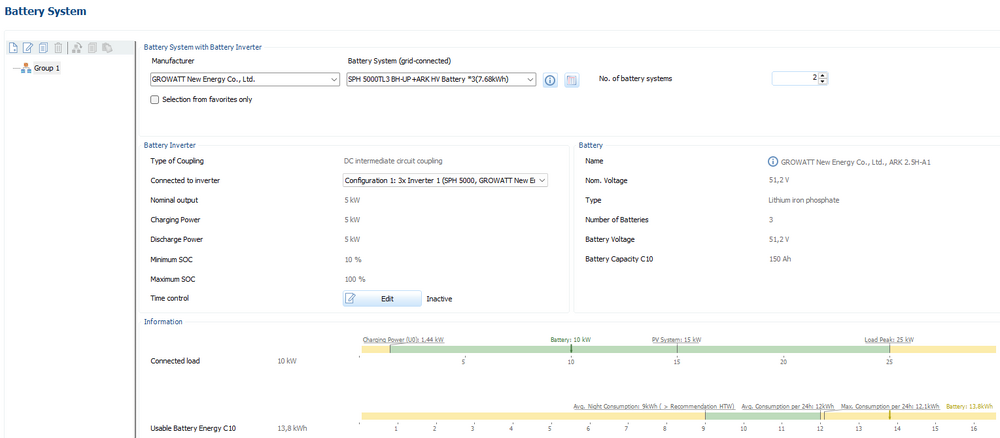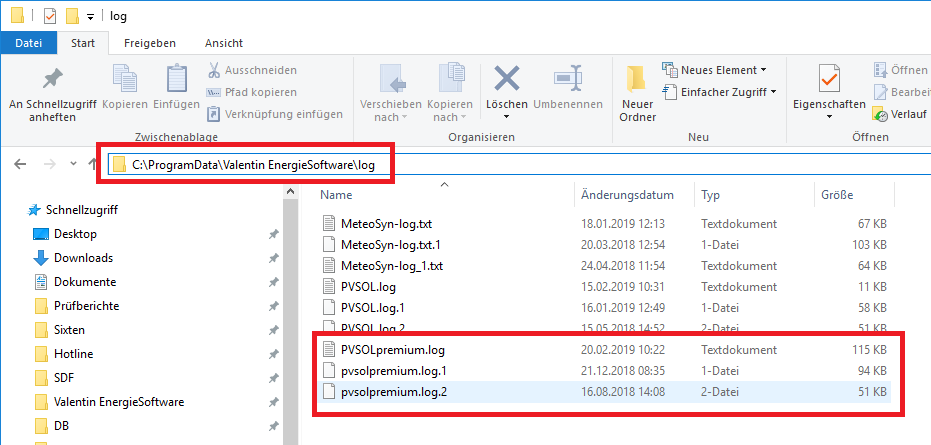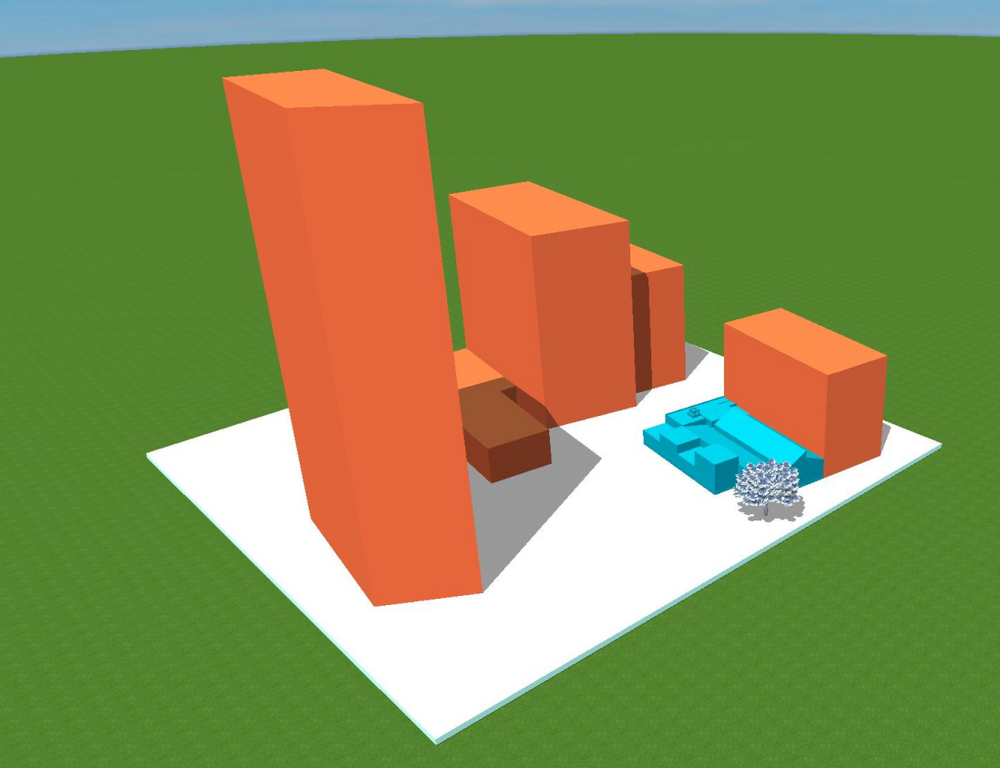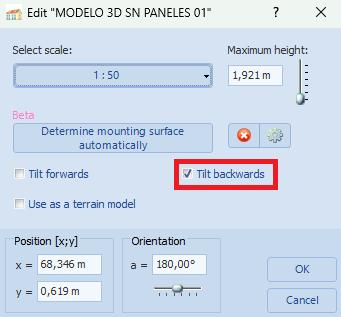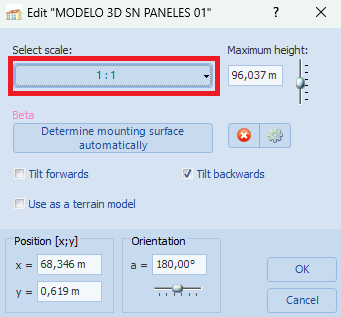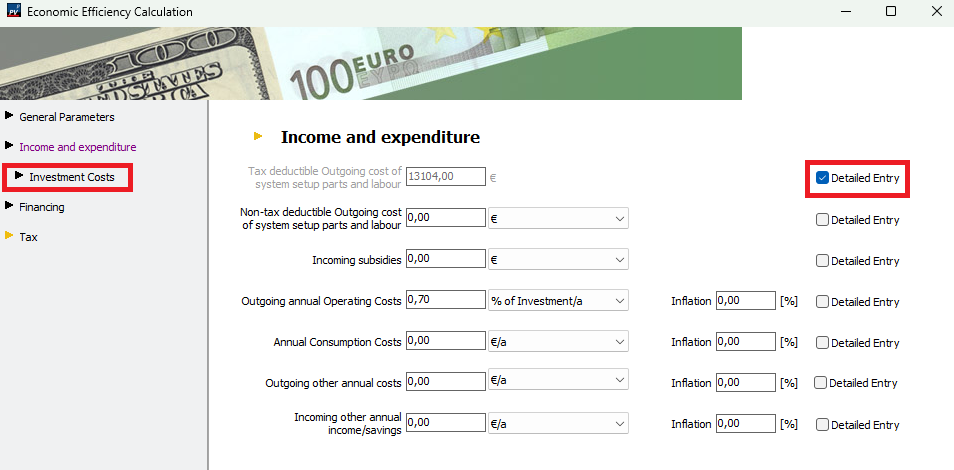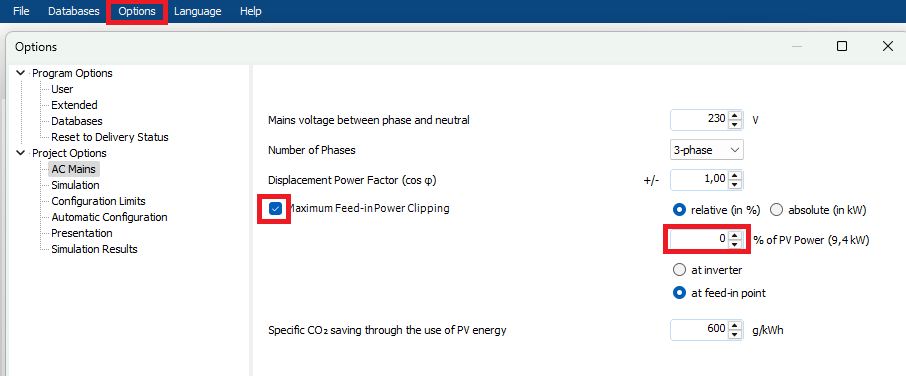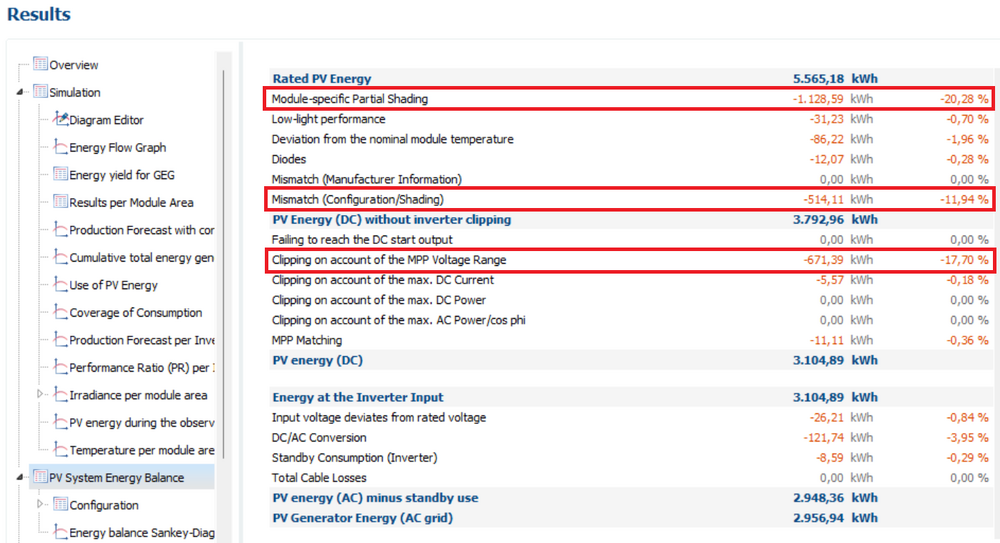-
Posts
408 -
Joined
-
Last visited
-
Days Won
23
Everything posted by hotline_oh
-
Dear D. Handel, Thank you for your inquiry. Yes, importing energy consumption data is possible with the trial version of PV*SOL premium. The only difference from the full version is that project reports cannot be downloaded.
-
Dear Lime, Thank you for your inquiry. Even if you're planning a roof-parallel system, don't select "Module Coverage." Instead, use the "Module Mounting" option and select a mounting system with a 0° tilt angle. For this mounting system, you can select the alignment to a reference edge.
-
Moin, Finn Hansen, vielen Dank für Ihre Anfrage. Die 8 Fahrten berechnen sich aus den Zeiten an der Ladestation: Es ist ein Wochentag mit zwei Fahrten dabei. Falls das irrtümlicherweise passiert ist und die Zeiten an allen Wochentagen gleich und so wie am Sonntag (Screenshot) sind, dann klicken Sie einfach auf "Werte für alle Tage übernehmen", damit setzen Sie die Anzahl der Fahrten pro Woche wieder auf 7. Die gewünschte Reichweite pro Woche von 2100 km erreichen Sie nicht, weil die Reichweite nach WLTP nur 280 km beträgt.
-
Moin, Finn Hansen, vielen Dank für Ihre Anfrage. Elektrofahrzeuge werden von PV*SOL wie Batteriesysteme gerechnet. Der Batterie-Wechselrichter ist dann die Ladestation des Fahrzeugs. Die Modellierung von Elektrofahrzeugen unterscheidet sich hauptsächlich in den Abwesenheiten der „Batterie“ (also des Fahrzeuges) und dem Energie-Management beim Laden. Eine Erläuterung zu den Ladestrategien finden Sie in der PV*SOL-Hilfe: https://help.valentin-software.com/pvsol/de/berechnungsgrundlagen/batteriesysteme/ladestrategien/ In PV*SOL können Sie zwischen zwei Lademodi wählen: „Standard“ und „PV optimiert“. Im Lademodus „PV optimiert“ wird je nach Verfügbarkeit und Bedarf der optimale Zeitpunkt für die Nachladung ermittelt. Eine Erläuterung zu den Lademodi finden Sie in der PV*SOL-Hilfe: https://help.valentin-software.com/pvsol/de/berechnungsgrundlagen/elektrofahrzeuge/ Ihrem Diagramm entnehmen wir, dass Sie vermutlich den Lademodus „Standard“ gewählt haben und dass Ihr E-Fahrzeug von 6 bis 18 Uhr nicht an der Ladestation steht. In dieser Zeit wird der Ladezustand von 6 Uhr als Konstante angezeigt. Um 18 Uhr, wenn das Fahrzeug an die Ladestation zurückkehrt, ändert sich der Ladezustand sprunghaft auf den Wert nach der Fahrt. Im Lademodus „Standard“ beginnt die Ladung dann sofort um 18 Uhr, im Lademodus „PV optimiert“ erfolgt die Ladung ggf. zeitlich verzögert. In Ihrem Projekt schwankt der Ladezustand zwischen 20 und 80 Prozent. Wenn Sie die Fahrleistung (die Reichweite in km) erhöhen, erreichen Sie Ladezustände zwischen 10 und 90 Prozent. Ladezustände von nahezu 100 Prozent werden nicht erreicht, wenn das Fahrzeug diese Lademenge gar nicht benötigt. Sollten Sie jedoch ein E-Fahrzeug mit der Funktion „Entladen zur Verbrauchsdeckung“ ausgewählt haben, dann erfolgt im Lademodus „Standard“ die Vollladung auf 100 Prozent.
-
Dear Carl, Thank you for sending the project file. For systems with a full feed-in concept, you can specify the P value used for the financial analysis in the ‘Bankability: Exceedance probability of the forecast yield (P50/P90)’ dialogue. Unless otherwise specified, the P50 value is used by default in the yield simulation. You have selected the P90 value, which is why the low grid export in the first year is used for the financial analysis.
-
Dear Carl, Thank you for your inquiry. Please send us the project file (*.pvprj) to hotline@valentin-software.com, so that we can take a closer look at it.
-
Dear Henrique, Thank you for your inquiry. We cannot reproduce your problem. In the Energy Flow Graph we can see that the battery is not charged from the grid. Regarding your second question: Unfortunately, it isn't possible to enable charging only after the PV Power became above the clipping power.
-

2 Different values for energy, that i have to buy from the grid operator.
hotline_oh replied to Adam_W's topic in PV*SOL
Dear Adam_W, Thank you for your inquiry. Unfortunately, this isn't possible. We will forward your request to our development department. -
Dear Maggie, Thank you for your inquiry. If you specify a displacement power factor (cos φ < 1) in the options, the inverter's active power will be used instead of its apparent power.
-

Verschaltung bei WR tausch erhalten. Alte Anlagen erneuern.
hotline_oh replied to Ralph_Joos's topic in PV*SOL
Sehr geehrter Herr Joos, vielen Dank für Ihre Anfrage. Die von Ihnen gewünschten Features (Erhalt der Verschaltung bei Wechselrichter-Tausch, freie Namengebung der Wechselrichter und der Strangbezeichnungen) sind uns bekannt und wir arbeiten an einer Umsetzung. Um bei 600 Modulen nicht alle Module einzeln von Hand verschieben zu müssen, empfehlen wir die Verwendung der Funktion "Modulflächen für die Verschaltung definieren" (eine Erläuterung finden Sie hier). Sie können Modulflächen je Wechselrichter, je MPP-Tracker oder je Strang definieren. Das kann viel Arbeit einsparen, insbesondere wenn Sie erst mit dem alten und anschließend mit dem neuen Wechselrichter simulieren wollen. Die Definition der Modulflächen bleibt beim Wechselrichtertausch erhalten. Innerhalb der Modulflächen müssen Sie auch nur in besonderen Fällen die Module einzeln von Hand verschieben. In den 3D-Optionen können Sie die Richtung, den Startpunkt und den Verlauf pro Strang, pro MPP-Tracker, pro Wechselrichter und pro Modulformation angeben. Diese Sortierung lässt sich auch bei bestehender Wechselrichter-Verschaltung ändern, ohne dass die Wechselrichter-Verschaltung dabei gelöscht wird. -
Dear Tade, Thank you for your message. The problem has been solved. Software version 2025 R5 will be released on April 2.
-
Dear Lukas, Thank you for your inquiry. Have you enabled the saving of characteristic curves to project files? If so, please disable this function. If autosave files are saved for the current project, please send us the most recently saved file to hotline@valentin-software.com. The autosave files are saved by default in the following directory: C:\Users\USERNAME\Documents\Valentin EnergieSoftware\PVSOL premium 2025\Autosave Please also send us the log files. These files can be found in the following directory: C:\ProgramData\Valentin EnergieSoftware\log Please note: ProgramData normally is a hidden folder. If it is not shown please enable the option "Show hidden files and folders" in the folder settings or type in the path in the Windows Explorer path field. We would need the following files: pvsolpremium.log pvsolpremium.log.1 (if available) pvsolpremium.log.2 (if available)
-
Sehr geehrter Herr Müller, vielen Dank für den Hinweis. Wir arbeiten an einer Lösung. Das Problem ist bekannt und wird mit einem der nächsten Software-Updates behoben werden.
-
Dear DroneOperator0, Thank you for your inquiry. The easiest method for resizing an image on a Windows PC is to use the built-in Photos app: https://support.my.uq.edu.au/app/answers/detail/a_id/3276/~/how-do-i-change-the-resolution-size-of-an-image-on-a-windows-pc%3F
-

Hybrid inverters for 3 phase current - off grid system
hotline_oh replied to Sunnyfish's topic in PV*SOL
Dear Sunnyfish, Thank you for your inquiry. The off-grid planning in PV*SOL is based on the SMA Off-Grid Configurator program, which we once programmed for SMA. It only contains the SMA design rules and you can only plan off-grid systems with AC-coupled batteries. It is not possible to plan systems in which the battery is DC-coupled. When using 3 x Growatt SPF 5000 ES, the batteries (2 x Growatt GBLI 6532, 6.5 kWh) are coupled on the DC side. This cannot be simulated correctly with the off-grid tool in PV*SOL. You have two options: 1. You use the off-grid tool and simulate your DC-coupled system as an AC system. To do this, create a new Growatt SPF 5000 ES in the database for the PV inverters (or use the Growatt SPH 5000 instead). On the ‘Inverters’ page, select 3 x Growatt 5000: On the ‘Battery Inverter and Battery’ page, select 3 x Growatt SPF 5000 ES and 2 x Growatt GBLI6531/2: The single line diagram looks like this: 2. You switch to a grid-connected system with electrical appliances. You create a new Growatt SPF 5000 ES in the PV inverter database (or use the Growatt SPH 5000 instead). You also create a Growatt SPF 5000 ES with one Growatt GBLI 6532, 6.5 kWh in the battery system database and select "DC intermediate circuit coupling": On the ‘Inverters’ page, select 3 x Growatt 5000: On the ‘Battery System’ page, select 1 x Growatt SPF 5000 ES with Growatt GBLI6531/2 and No. of battery systems "2": The single line diagram looks like this: In the window “System type, Climate and Grid” you set the “Maximum Feed-in Power Clipping” to zero. Then no energy will be fed into the grid. The value under “Total Consumption covered by grid” then represents the energy which cannot be covered by the PV system. This energy has to be provided by a generator. -
Dear Stenger, Thank you for your inquiry. The cable length estimation has not yet been included in the 3D modelling. Thank you for pointing this out again.
-
Sehr geehrter Herr Rothenbühler, vielen Dank für Ihre Anfrage. Bitte senden Sie uns die betroffene Projektdatei (*.pvprj) an hotline@valentin-software.com oder laden Sie sie hier hoch. Sollten Sie beim Absturz des Programms um das Senden eines Fehlerberichts gebeten werden, senden Sie den Fehlerbericht bitte ab und teilen Sie uns die genaue Uhrzeit des Fehlerberichts mit, damit wir ihn zuordnen können. Bitte senden Sie uns auch die Log-Dateien des Programms. Diese befinden sich in folgendem Verzeichnis: C:\ProgramData\Valentin EnergieSoftware\log Bitte beachten Sie: ProgramData ist normalerweise ein versteckter Ordner. Falls er nicht angezeigt wird, aktivieren Sie bitte die Option „Versteckte Dateien und Ordner anzeigen“ in den Ordnereinstellungen oder geben Sie den Pfad im Pfadfeld des Windows Explorers ein. Wir benötigen die folgenden Dateien: - pvsolpremium.log - pvsolpremium.log.1 (falls vorhanden) - pvsolpremium.log.2 (falls vorhanden)
-
Dear MJL, Thank you for your inquiry. We have sent you a message with the download link.
-
Dear Lukas, Thank you for your inquiry. We have converted the dae file into an obj file. We were then able to import the 3D model, but the textures were missing: Colour_A02.jpg Leaf_Dif.png caule.jpg As the model was initially incorrectly orientated (tilted), we were unable to import it at a scale of 1:1. We imported it at a scale of 1:50, then tilted it backwards and then set the scale back to 1:1. Import VAL.pvprj
-

Adding cost for replacement inverter into the "Finansial analysis"
hotline_oh replied to PVSOLLearner's topic in PV*SOL
-
Dear said allaw, Thank you for your inquiry. 1. You define a maximum feed-in power clipping at the feed-in point: 2. You define a charging strategy with C-charge (or I-charging) up to 100 %. The C-charge is taken exclusively from the PV system, never from the grid: By default, the battery only serves consumption and does not discharge into the grid.
-
Hallo Sunfan, vielen Dank für deine Anfrage. Die Wechselrichter-Umbenennung ist leider noch nicht möglich. Wir danken dir für den erneuten Hinweis.
-
Dear Damian, Thank you for your inquiry. The database is maintained by the manufacturers themselves. The manufacturers have access to an online database in which they can enter their products. We then carry out database updates at regular intervals and the new entries are transferred to the users' databases. We will contact the manufacturer and ask them to enter the missing products in our database. You also have the possibility to create products by yourself. The easiest way is to copy an existing dataset (battery system with Goodwe inverter and a similar battery) and overwrite the values using the Dyness datasheet.
-
Dear ArtemVydysh, Thank you for your inquiry. If the MPPT voltage falls below 140 V, as in your example, the MPPT still controls the operating point at 140 V and generates a PV yield. This results in losses, which you can see in the energy balance. The PV yield can increase again if a more favourable operating point can be found.
-
Dear ArtemVydsyh, Thank you for your inquiry. Unfortunately, your project file is unavailable. Please try to resend it (either here or to hotline@valentin-software.com). If the file is too big, please use WeTransfer or similar.




